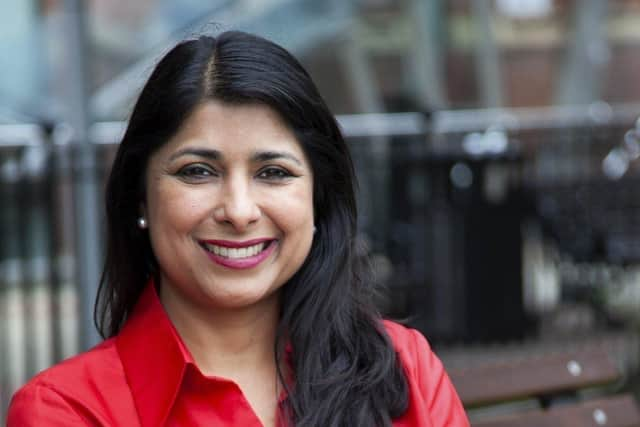International Women's Day theme a reminder to not confuse diversity with inclusion: Rashmi Dubé
Inclusion, I was once told, is “being asked to dance while diversity is being invited to the dance”. Inclusion is a long story we (women and women of ethnic backgrounds) have been shouting about for too many generations to count.
In today’s climate, with so many changes, we ought to be questioning why the theme for this year’s IWD is inclusion. Isn’t this already something that is occurring naturally now that we are all aware, and particularly in business?
Advertisement
Hide AdAdvertisement
Hide AdIn 2018, a Gallup report stated: “Inclusion refers to a cultural and environmental feeling of belonging. It can be assessed as the extent to which employees are valued, respected, accepted and encouraged to fully participate in the organisation. Contrary to what some may assume, diversity doesn’t necessarily imply inclusion.”


Furthermore, the Harvard Business Review article “Diversity Doesn’t Stick Without Inclusion” focuses on this distinction - “Part of the problem is that ‘diversity’ and ‘inclusion’ are so often lumped together that they’re assumed to be the same thing. But that’s just not the case. For example, while adding women to the board or promoting more people of colour might enhance diversity, it doesn’t necessarily change the culture of the organisation or ensure that these underrepresented groups will feel fully included and valued.”
The writer Davis uses the analogy, “Diversity speaks to who is on the team, but inclusion focuses on who is really in the game”.
Last week, I was lucky enough to attend the official launch of a Cabinet Office report that sheds light on this. The Women Led High Growth Task Force Report lays bare the startling facts on the lack of inclusion of women, revealing that 82 per cent of high-growth businesses have all male founding teams and that whilst 25 per cent of female entrepreneurs apply for funding, only 2 per cent of them receive investment. To add further salt to the open wound, as of January 31, a “high net worth individual” will now need an annual income of £170,000 in the last financial year – a jump from £100,000.
Advertisement
Hide AdAdvertisement
Hide AdIt appears the real reason we are still talking about inclusion is that women are still being excluded from economic empowerment. The way this can change is by supporting women and girls into leadership, decision-making, business, and STEM.
This does take effort and work by designing and building infrastructure that meets the needs of women and girls. This includes helping women and girls make informed decisions about their health, elevating women and girl’s participation and achievement in sport, promoting creative and artistic talent of women and girls, and supporting them in the workplace and as entrepreneurs.
So don’t be lazy or scared of this challenge. We should keep trying and keep failing until we get it right.
I believe we have come some small distance since March 8, 1857 in New York City when female textiles workers marched in protest of unfair working conditions and unequal rights for women, but there is still a long way to go.
By working together, we can get there quicker – let’s hope we are all dancing together in the future.
Rashmi Dubé is a partner at gunnercooke
Comment Guidelines
National World encourages reader discussion on our stories. User feedback, insights and back-and-forth exchanges add a rich layer of context to reporting. Please review our Community Guidelines before commenting.